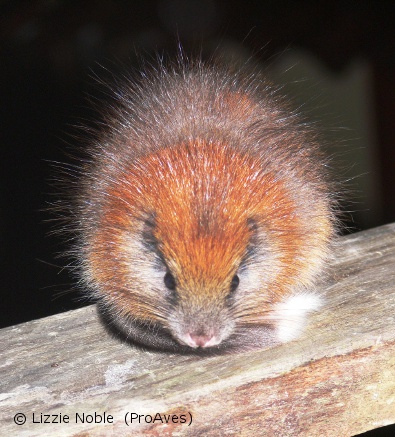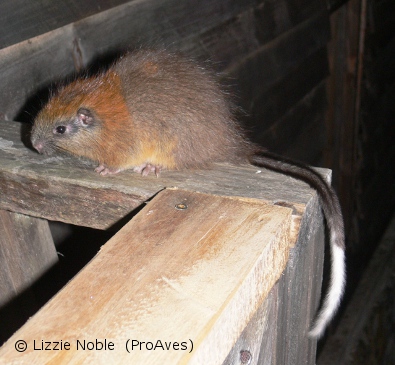The place was El Dorado Nature Reserve in the far north of Colombia, South America. The date May 4th, 2011 and the time 9:30 pm. The lucky ones were Lizzie Noble and Simon McKeown who after just one month of volunteering monitoring endangered amphibians, enjoyed the first sighting of the magnificent red-crested tree rat (Santamartamys rufodorsalis) in 113 years.
The unique and mysterious guinea-pig-sized nocturnal rodent, who eluded many organized searches for year, simply showed up at the front door of the ecolodge. It stayed for almost two hours while the two volunteers took the first photos ever of a creature the world thought would never be seen again, and then returned to the forest.
The red-crested tree rat will now likely be designated as Critically Endangered under the International Union for Conservation of Nature (IUCN)’s Red List of Threatened Species criteria. One of the main threats facing this species might possibly be the population of feral cats which have been introduced in the area and who commonly prey on the native fauna. Given its globally endangered status and the fact that the red crested tree rat is the only species in its genus (Santamartamys); this rediscovered mammal could potentially be evolutionarily distinct enough to become an EDGE mammal. We will certainly be keeping an eye on new findings with regards to this species. .
Dr. Paul Salaman, the scientist from the World Land Trust-US who confirmed the identity of the species said: “The El Dorado Nature Reserve represents the ultimate Noah’s Ark, protecting the last populations of many critically endangered and endemic flora and fauna; a living treasure trove like no other on earth,” The Reserve was established in 2005 by Fundación ProAves — Colombia’s foremost bird conservation organization — with support from American Bird Conservancy, World Land Trust-US, the U.S. Fish and Wildlife Service’s Neotropical Migratory Bird Conservation Act, Fundación Loro Parque and Conservation International.
The 2,000-acre El Dorado reserve is named after the legendary lost city of gold, and is internationally known as a unique destination for ecotourists. The reserve and adjacent lands host the highest concentration of continental, range-restricted bird species found anywhere in the world, It also holds one of the highest concentrations of endemic and threatened amphibian species in the world. El Dorado is listed as an Alliance for Zero Extinction (AZE) site, establishing it among the world’s highest priorities for conservation. Despite its status remarkably little is known about the area.
“This discovery marks the beginning of a major effort to save the red-crested Tree rat and heralds the start of a global initiative in search of lost mammal species,” said Salaman.
Information provided by Conservation International: Https://www.conservation.org/newsroom/pressreleases/Pages/Rodent-Rediscovered-Colombia.aspx

